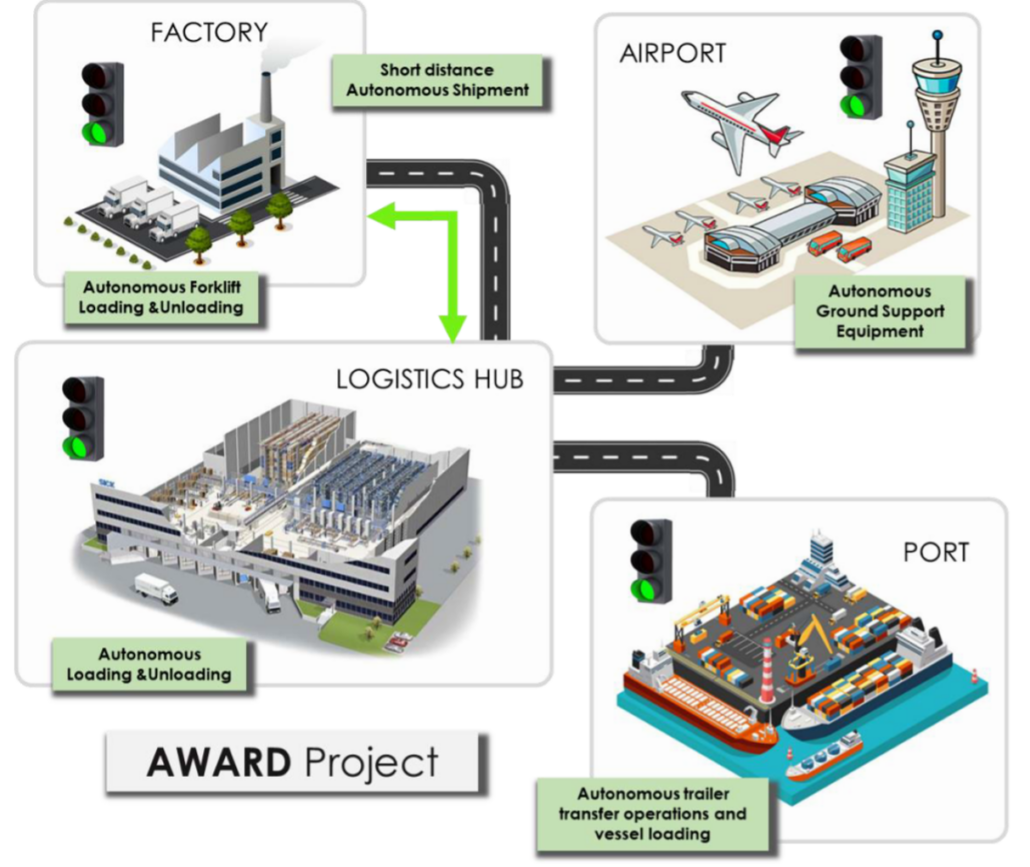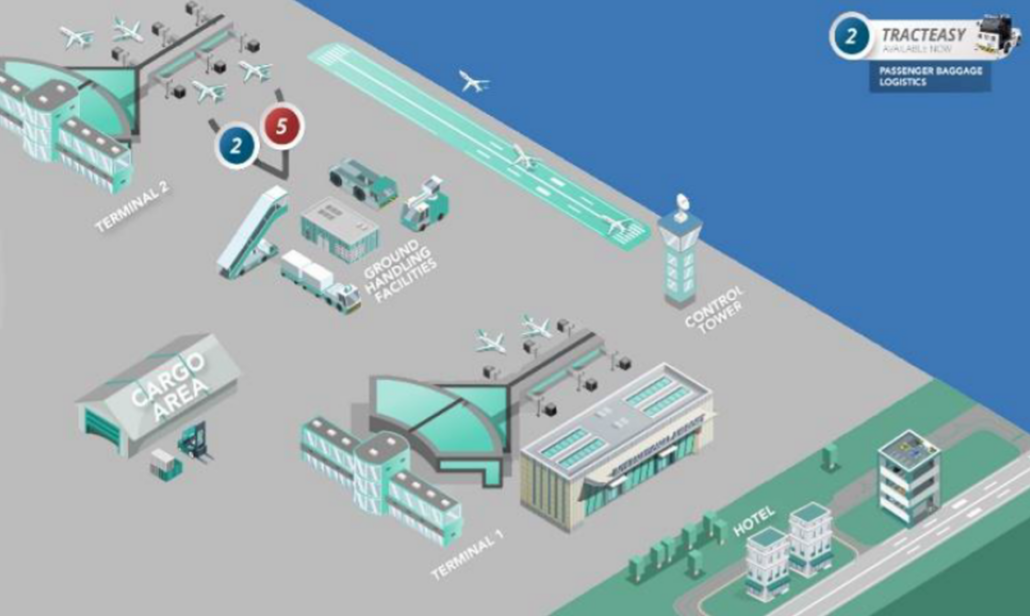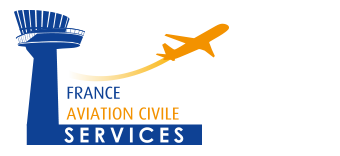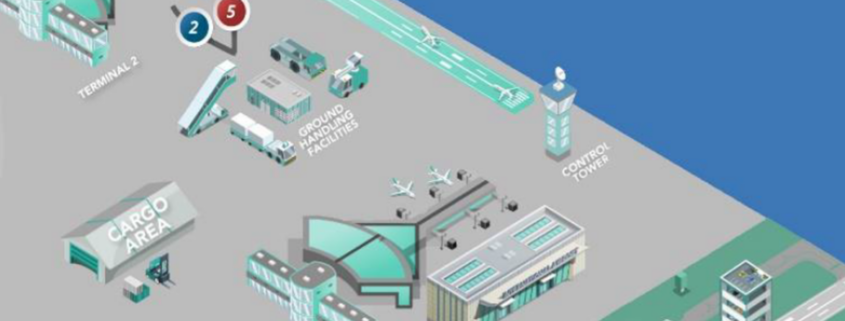AWARD: All Weather Autonomous Real logistics operations and Demonstrations
As part of the European project, Horizon 2020, FRACS (France Aviation Civile Services) and STAC (Service Technique de l’Aviation Civile), strongly encouraged by the DSAC, have embarked on the AWARD project on the experimentation of automated vehicles.
The overall objective of the project is to test a set of sensors and systems that can enable the operation of autonomous vehicles in a large number of applications, including in bad weather conditions such as heavy rain, snow or fog. This is because the sensors that are used for vehicle navigation may become less efficient and lead to operational limitations. The operational use of such autonomous vehicles, which require a high initial investment, can only be considered if it is not periodically hampered by adverse weather conditions.
Use cases proposed by the AWARD project

4 use cases were considered:
- loading and unloading of carriers in warehouses and industrial facilities (FACTORY),
- Hub-to-hub shuttle services on open road (LOGISTICS HUB),
- Luggage transport at airports (AIRPORT),
- Container transfer and ship loading operations at ports (PORT).
The contribution of FRACS and STAC naturally focuses on aeronautical use cases and in particular the integration of these vehicles into airport operations.
FRACS and STAC team contributed to the initial definition of the use cases but above all to the development of a regulatory approach based on the latest progress in safety management and notably the safety studies related to risk analysis on airport, with a particular attention to the developments underway for the management of UAS and RPAS.
In order to enable the introduction of such autonomous vehicles, it is necessary not to contradict the existing airport regulations, but to take advantage of their flexibilities. Thus, as with drones, focus is to evaluate the potential operational risks.
Airport applications of autonomous vehicles can arguably be categorized into broad categories, reminiscent of the scenario categorization used for flying drones.

On airports, 4 categories of application could be envisaged:
- Cleaning or detecting objects on the runway, checking visual aids or clearing snow from the runway: neutralization of the runway necessary but fast and accurate navigation of the vehicle may improve efficiency;
- Guidance requiring taxiway transfers: « follow-me »; « Taxi bot », … ;
- Aircraft de-icing, snow removal from taxiways and apron, lawn mowers in grassy areas, fire fighting vehicles ;
- Applications on parking areas such as luggage or passenger transport, catering and other aircraft services with strong interactions with other stakeholders in the same areas.
The AWARD project is expected to be completed mid-2024. It has allowed us to approach the challenges associated with the operation of this type of vehicle and to gain expertise. At the same time, ICAO and its Airport Panel are launching work on these issues, and we hope that the work carried out in AWARD can be used by the DGAC and more broadly by Europe in order to support its position in a period of development of the regulatory framework for ground handling operations.



